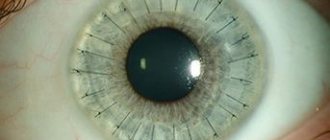In order to fully organize conscription for military service, it is not enough to conscript all registered persons. The modern army does not experience a shortage of personnel, so it can afford to make certain demands on the health of a conscript. Thus, each call begins with a medical examination. Due to certain indicators, a young man may not be included in military service, especially if these indicators are documented by entries in his personal medical record.
Analyzing frequently asked questions from conscripts, we can conclude that citizens are unaware of the issues of conducting a medical examination. Despite the fact that much attention has been paid to this problem and all regulations have been translated from dry legal language into publicly accessible language, we have to give the same advice every time - look at the illness schedule.
What is a sick schedule
The task of the military medical commission is not to make a diagnosis, but to establish whether this diagnosis corresponds to the possibility of performing military service. The disease can be identified by contacting a doctor at a clinic, and there is no need to wait for the start of conscription activities. But in order to predict with a certain accuracy whether someone with a certain illness will be accepted into the ranks of the Armed Forces, it is necessary to understand the principle of operation of the draft commission.
A government decree has developed a document called the Schedule of Diseases. According to this document, experts make a decision regarding each conscript. The Schedule itself is presented as a list of diseases with a description of symptoms. Each case corresponds to a certain fitness category, which indicates the state of health.
The draft commission must make a decision on assigning a category to a citizen based on reliable data about the identified disease.
How does color blindness occur?
Color blindness or color blindness is a term used to describe the inability to recognize certain colors. All shades that a person sees are a combination of red, green and blue. These are the main shades of light rays that penetrate the eyes. Basically, we are not talking about 100% color blindness - a complete inability to distinguish colors.
Important! People with this disorder cannot recognize some colors (they see them as “the same”), while other shades are distinguished from each other.
The term “color blindness” comes from the name of the English naturalist J. Dalton, who, suffering from this disorder, described it from a scientific point of view in 1794. The disorder is caused by faulty retinal cells called cones, which are responsible for color perception. For each primary color - green, red and blue - there is one type of cone. The most common disorder is the inability to distinguish between red, green and violet, while color blindness in yellow and blue is less common.
Eye disease, army and liberation
Among vision pathologies, color weakness is often detected. This disease is defined in Article 35 of the above document. But presence alone is not enough to give a negative answer to the question: “Are people with color blindness accepted into the army?” To try to independently understand this problem, you need to rely on the document in the most recent edition.
The reason is that medicine does not stand still, but is systematically developing. In addition, conditions in the army are gradually softening. Therefore, some diseases that were not previously accepted for service are now on the list of acceptable ones.
A similar phenomenon occurred with a disease such as dichromasia. In simple words, now colorblind people are hired to serve, introducing some restrictions for them. Speaking in the language of the draft commission, they are assigned category “B”, which implies service in almost all troops, except for law enforcement agencies and special services.
Find out: Can you serve in the army with asthma?
The situation is somewhat different with acquired color blindness. Although this option is not spelled out in the schedule, the overwhelming majority of the commission’s decisions are related to exemption from military service.
This happens for the following reason. The disease develops as a side effect of injury or other, more severe pathology. Colorblindness itself will not provide an exemption, but other diseases can be identified for which an examination will be carried out. If it turns out that color weakness arose due to functional disorders of the eye(s), the commission may issue a verdict on assigning category “B”.
Can girls be colorblind due to illness?
The cells responsible for twilight vision and color perception in daylight are located in the fundus of the eye. If they are injured or for some reason subjected to dystrophy, night blindness and color blindness develop. The course of the pathology depends on which cells have ceased to function correctly. No less often, acquired color blindness develops due to:
- injuries to the occipital lobe of the brain;
- post-concussion syndrome;
- benign and malignant tumors;
- stroke.
If a girl was born with normal vision, in old age she may experience age-related color blindness. It occurs due to Parkinson's disease, diabetic retinopathy, macular degeneration, cataracts.
Is it possible to fake an illness?
It is this question that secretly arises in the minds of conscripts. Let's talk a little about the types of color blindness and its manifestations. This is a disruption of normal perception of color(s). Destroying all stereotypes about this pathology, we note that deviations can be expressed to varying degrees.
- The mildest form of color blindness is trichromasia. It is characterized by a decrease in sensitivity to one specific color, but we are not talking about loss of perception.
- A more complex form is dichromasia. Here, as you might already guess, a complete lack of perception of one color is diagnosed. In the Schedule of Diseases, such a diagnosis allows you to serve.
- Monochromasia is rare. For a person suffering from monochromasia, two colors are missing. Practice shows that with normal visual acuity, pathologies with color perception do not interfere with recruitment.
Severe disappointment awaits if it seems that it is not so difficult to feign illness. It is enough just to try to “not notice” the desired shade using special tests. But before you commit a crime, and from the point of view of the law, this act is viewed in exactly this way, you need to think logically.
A person is already born with a disease. He physically cannot compare the visual picture, and therefore does not even suspect the presence of pathology. Color blindness is determined using special optical instruments. Consequently, any simulation will be easily exposed, and unambiguously.
Find out: Do they now accept conscripts with one testicle into the army, cryptorchidism and monorchidism?
If there is an irresistible desire to avoid urgent service, then it is better to focus the attention of doctors on the illness that is occurring. All that remains is to competently present your illness to the commission for consideration. As for color blindness, there is no point in hoping for release, since almost all clauses of Article 35 imply conscription.
Author's rating
Author of the article
Filatova Oksana
General practitioner. Current member of the VVK.
Articles written
88
How colorblind people see the world (photo) and colorblindness test
Information about the material Category: Interests Published: September 27, 2016
5 Rating 5.00
Finding out whether you yourself are colorblind is sometimes vitally important. Designers and their clients, drivers and salespeople must take a color blindness test. In some cases this information will be useful, and in others mandatory.
For example, all normal trichromats, abnormal trichromats and dichromats distinguish the numbers 9 and 6 equally correctly in the table (96).
Here are other examples from the color blindness test:
All trichromats, anomalous trichromats and dichromats correctly distinguish the shapes triangle and circle in the table. | Normal trichromats distinguish the number 9 in the table. Protanopes and deuteranopes distinguish the number 5. |
Normal trichromats are distinguished by a triangle in the table. Protanopes and deuteranopes see a circle. | Normal trichromats are distinguished in the table by numbers 1 and 3 (13). Protanopes and deuteranopes read this number as 6. |
You can find out how colorblind people see the world from these photos:
Interesting facts about color blindness:
• The word “colorblind” comes from John Dalton, who learned that he was colorblind at the age of 26, at the same time that his jacket was burgundy instead of gray.
• There are colorblind people: Monochramtics - people who have black and white vision Michromancers - people who do not distinguish between one of the three colors. If it is red, then it is protanopia. If green, then deuteranopia. And if it’s violet, then it’s trinatopia.
• Among colorblind people, only 1% are monochromatic.
• Dogs are not monochromatic (and they are already tired of repeating this). They see brown, yellow and blue. But rats don't see red. Video about how animals see the world.
• The largest percentage of colorblind people is in the Czech Republic and Slovakia. The smallest among the Brazilian Indians.
• Color blindness first came to attention in 1875, when a train accident occurred in Sweden due to the driver being color blind and unable to see the color red.
• Among men, 8% are congenital colorblind, and among women 0.5%. This is almost every 12th, with a 50/50 ratio of men and women.
• In this case, hereditary color blindness is transmitted more often through the female line.
• You can become colorblind after a head injury, flu or heart attack.
• Blue is the color that people most often perceive correctly. That is why many software interfaces are made in this color.
• Among the famous artists who were color blind were Vrubel and Repin. The latter tried to correct his painting “Ivan the Terrible and his son Ivan,” but he was not allowed to complete the job by those around him, who noticed that the color scheme was too distorted.
back to top
Suitability categories
Let's list all the categories:
| Category | Suitability |
| A | Full suitability |
| B | Fitness with minor impairments |
| IN | The health of the conscript requires restrictions on conscription |
| G | Temporarily unsuitable |
| D | Completely unfit for military service |
Farsightedness ranging from 6 to 8 diopters and myopia ranging from 3 to 6 allows conscripts to be assigned category A. People with conjunctivitis, astigmatism from 2 to 4 diopters and similar disorders are considered fully suitable. Category B is assigned for serious problems with the cornea and other parts of the eye.
Problems with the optic nerves, glaucoma, and improper muscle function are classified as category B. Such conscripts are sent to special forces to serve in the army. Severe forms of pathologies belong to category G. People are temporarily unfit during the recovery period after surgery. The conscript is given a deferment from the army to restore his health. After this, a second medical examination is carried out to determine suitability for service.
Will they be called up for service after eye surgery?
Restoring visual acuity can be done both with the help of medications and through surgery. However, it is not possible to immediately say what effect the treatment received will have on changing the previously assigned fitness category. Various factors influence category change.
The final decision by military doctors is made according to the previously performed treatment. You can often find information on the global network about the impossibility of serving in the army after vision correction. The main argument in defense of the position is that the consequences of myopia obtained before the intervention are not eliminated, but remain on the retina. Only the ability to normal vision is restored, but there is no 100% guarantee that vision loss will not resume.
However, medical commission specialists base their conclusions on the latest information received. That is, they pay attention to the condition of the conscript directly during the training camp. In case of surgical intervention during military service, the young man has the right to apply for a deferment. This is regulated by the provisions of Art. 36 "Schedules". The deferment period is determined by the VHC doctors. Read more about military doctors at the link.










